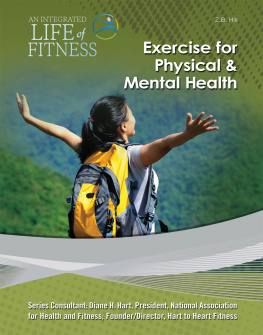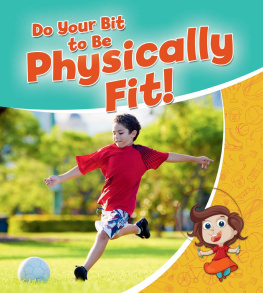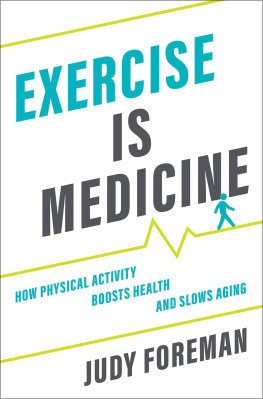
Contents
Disclaimer
All information is intended for your general knowledge only and is not a substitute for medical advice or treatment. You should seek medical advice before starting this or any other weight loss or fitness regimen. We make no warranty, express or implied, regarding your individual results.
The author disclaims any personal liability, for loss or risk incurred as a result of any information or advice contained herein, either directly or indirectly.
All links are for informational purposes only and are not warranted for content, accuracy, or other implied or explicit purposes. All links were working at the time of this eBooks release but may now have expired.
The author does not intend to render legal, accounting or other professional advice in the documents contained herein. The reader is encouraged to seek competent legal and accounting advice before engaging in any business activity.
This eBook may not be sold or given away. Unauthorized distribution, resell, or copying of this material is unlawful. The author reserves the right to use the full force of the law in the protection of its intellectual property including the contents, ideas, and expressions contained herein.
Introduction
One of the unfortunate facts of life is that the older you get, the less effective your body becomes. Activities that seemed simple when you were in your 20s, such as hitting the gym for an intense workout or going for a high powered run, become a lot more difficult when you hit your 60s. As a result, it becomes tempting to give up on exercise altogether once you reach this age.
However, exercising as you age is very important. Regular exercise has a long list of health benefits, many of which are even more beneficial to seniors. The list below outlines just some of the many senior specific health benefits of regular exercise:
- Regular exercise boosts your brain and helps to protect against a range of age related mental disorders including Alzheimers disease, dementia, depression and Parkinsons disease.
- Regular exercise boosts your eyes and helps to protect against a range of age related vision disorders such as cataracts and glaucoma.
- Regular exercise boosts your heart and cardiovascular system which helps protect against heart disease, high blood pressure and stroke.
- Regular exercise improves bone strength which helps protect against broken bones, fractures and osteoporosis.
- Regular exercise improves your balance which helps protect you from falls and the related injuries.
- Regular exercise improves your muscular strength and mobility which enhances your quality of life and allows you to perform daily tasks without assistance.
- Regular exercise protects against a range of chronic disease including cancer and diabetes.
Instead of giving up on exercise as you age, you just need to adapt your exercise routine. While lung busting 10 mile runs or lifting huge weights at the gym may no longer be a possibility, there are still plenty of low impact exercises you can try.
In this eBook I am going to help you adapt your routine by providing you with 25 low impact exercises for seniors. Each one of these exercises is gentle enough for you to perform without injury, but when performed regularly, will do wonders for your health.
As with all exercise programs, make sure you start slowly when doing these low impact exercises for the first time and then work up to a comfortable but challenging pace. Although they have been specifically chosen because they are low impact, injury is still a possibility if you dont perform them correctly. Starting off slow, learning the form and then increasing the pace is a much better option than starting too fast, injuring yourself and then having to go a few weeks without exercise.
Chapter 1 5 Balance Exercises
Balance is a key skill that unfortunately deteriorates with age. A dangerous side effect of this is that as your balance declines, your risk of falling and injuring yourself increases.
The good news is that by performing balance exercises regularly, you can minimize this age related decline in balance and protect yourself from falls and injuries.
This chapter discusses five of the best balance exercises for seniors. Perform them regularly to keep your balance strong and protect yourself from falls.
1. Chair Squat
The chair squat is a brilliant introductory exercise and gets you used to balancing without taking your feet off the ground or forcing you to balance while moving. If you havent performed balance exercises for a long time, this is a great one to start with.
Equipment Required:
- 1 chair
Instructions:
Stand about 6 inches in front of the edge of the chair, with your feet and knees a hip width apart.

Bend your legs, raise your arms out in front of you and slowly sit back on the chair.

Slowly straighten your legs, lower your arms back down to your sides and stand up while keeping your upper body straight and your core muscles tight.

Repeat steps 1-3 for as many repetitions as you desire.
Why Is The Chair Squat Exercise So Great For Seniors?
With the chair squat exercise, you are fully in control of the movements, so you can ensure that theres no unnecessary pressure on your legs and this helps you avoid injury. The chair also provides extra support, so if you do lose your balance, theres something ready to catch you which provides even more protection from injury.
Chair Squat Exercise Variations:
Once you can balance fully while performing the chair squat exercise, try the variations below to keep it fresh and challenging:
- Hold a dumbbell in each hand as you perform the chair squat exercise to improve the strength of your legs as well as your balance.
- Place a resistance band under your feet and perform bicep curls while standing up to target your arms and legs at the same time.
- Perform the chair squat exercise using just one leg for a much more challenging balance exercise.
2. Single Leg Bent Knee Balance With Chairs
The single leg bent knee balance exercise is a great way to get used to balancing on one leg. Its a nice, slow controlled movement which doesnt throw you off balance completely but is challenging enough to help your balance improve.
Equipment Required:
- 2 chairs
Instructions:
Place the two chairs at either side of your body.

Stand up straight with your feet and knees touching together and one hand on each chair.

Slowly raise your right foot off the ground and keep raising your right knee until it is parallel with your hips, then hold this position for 15-20 seconds.
Next page





















